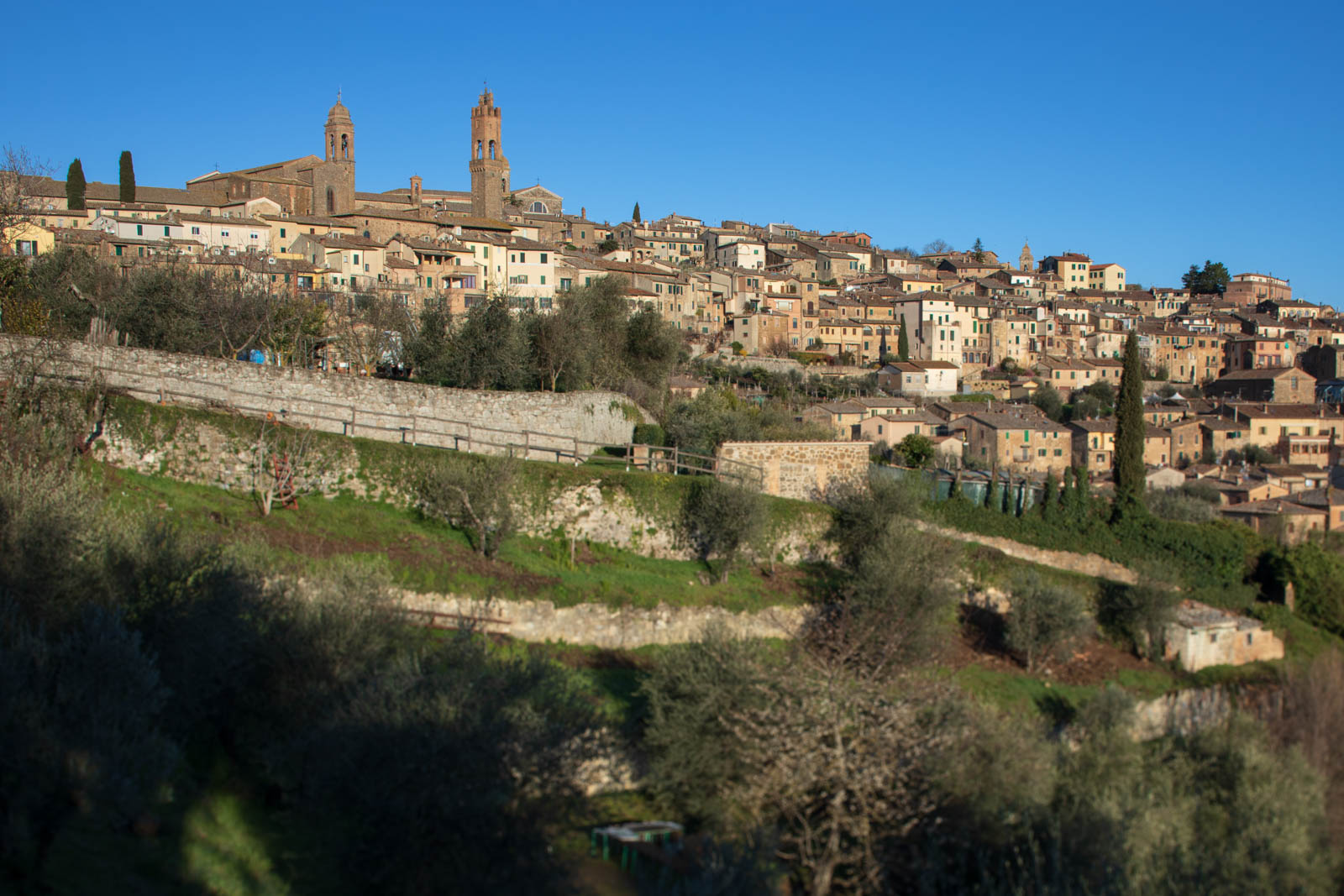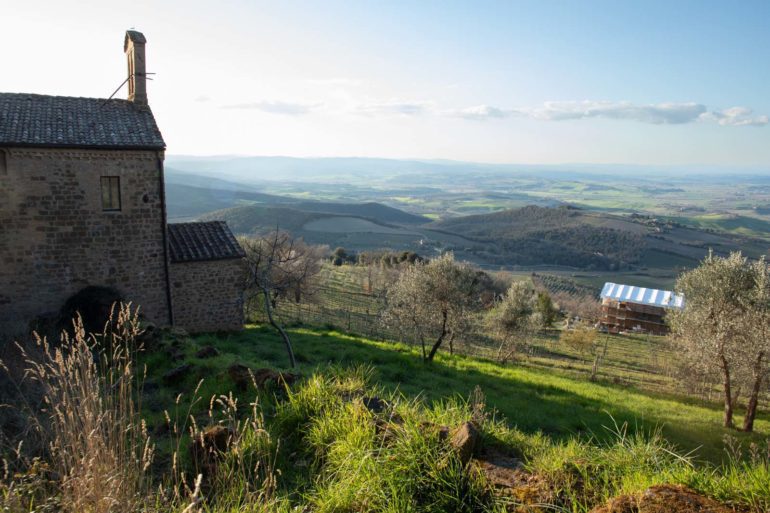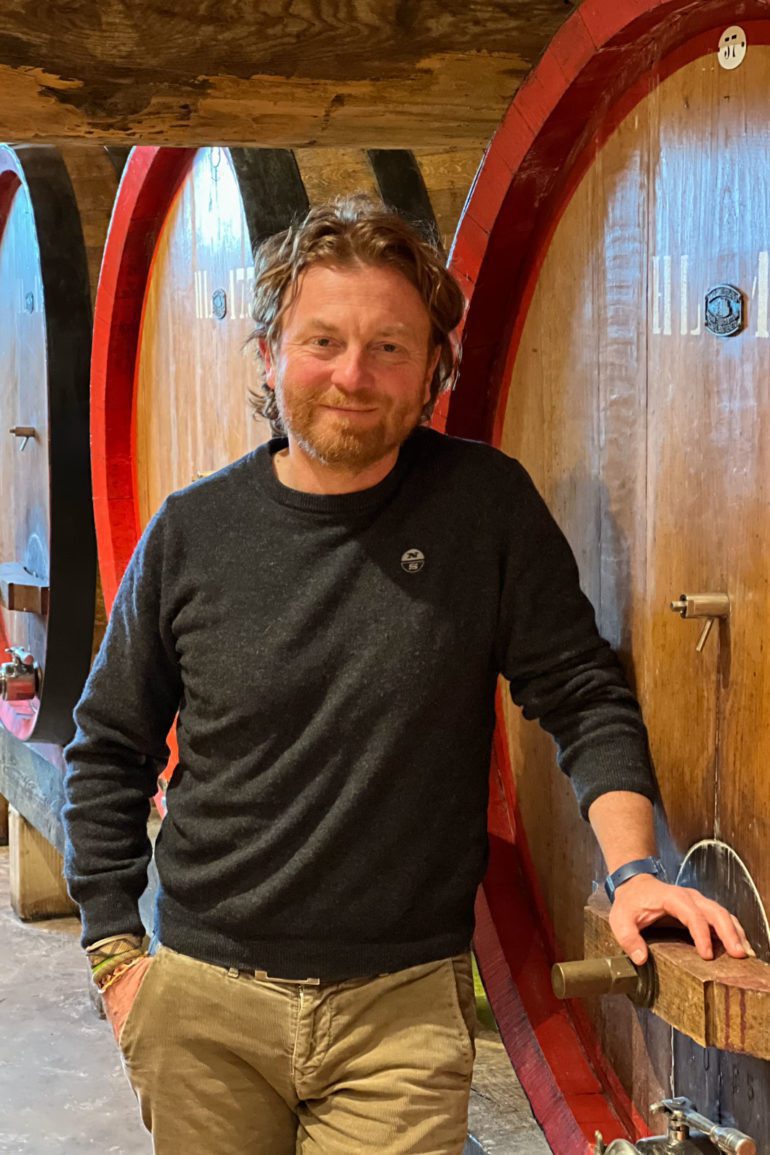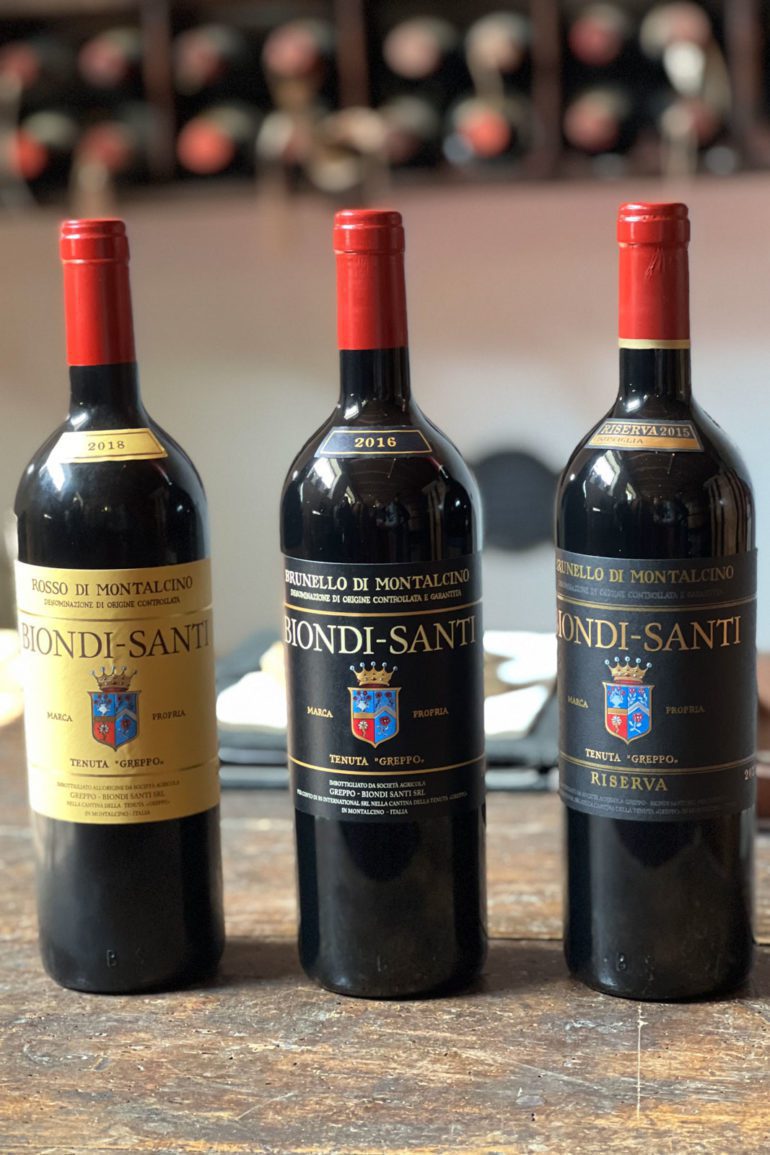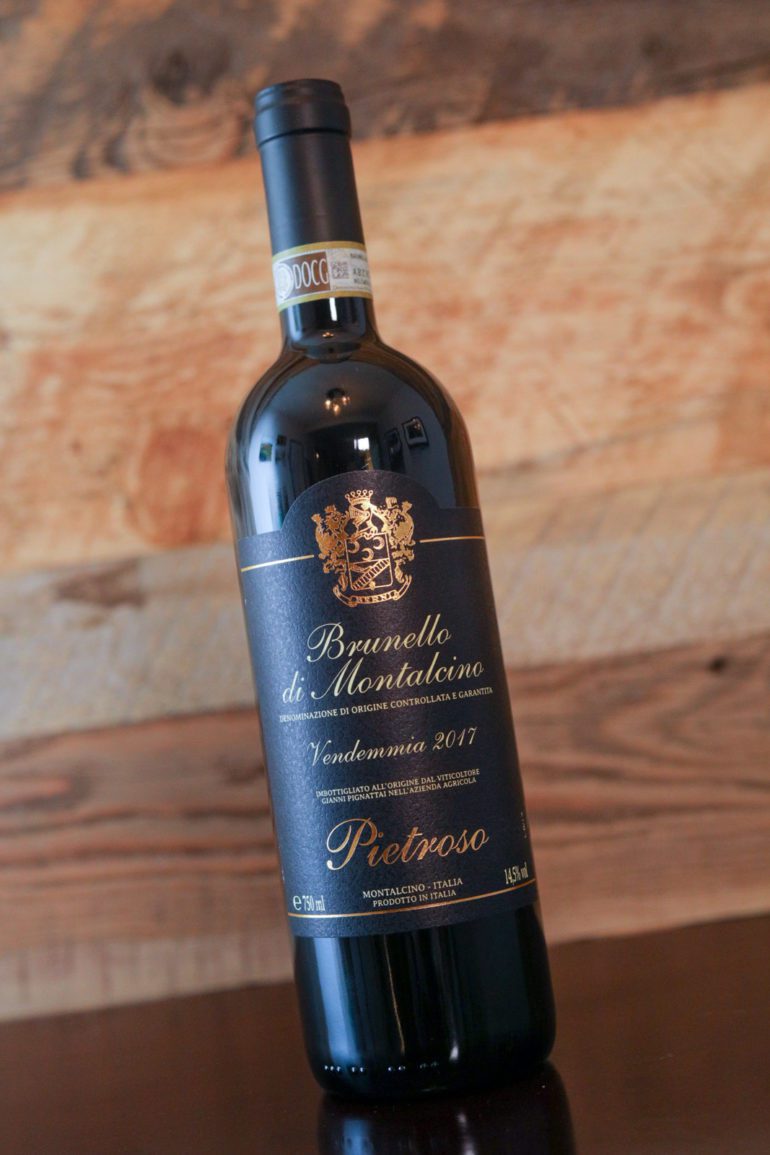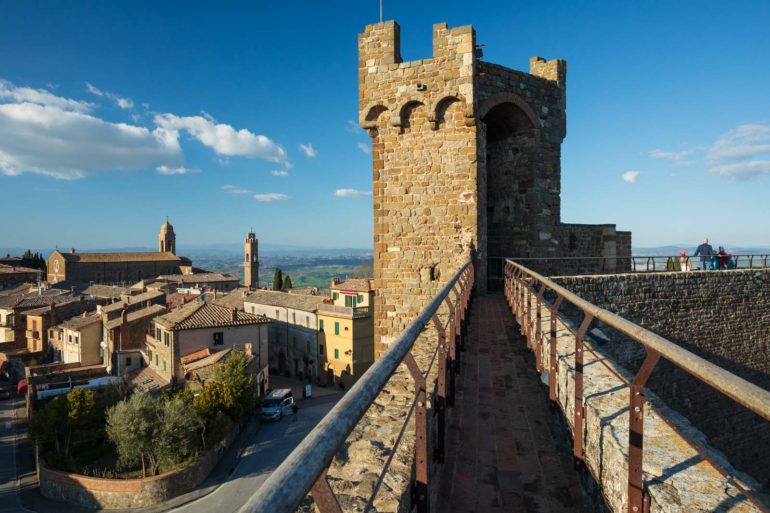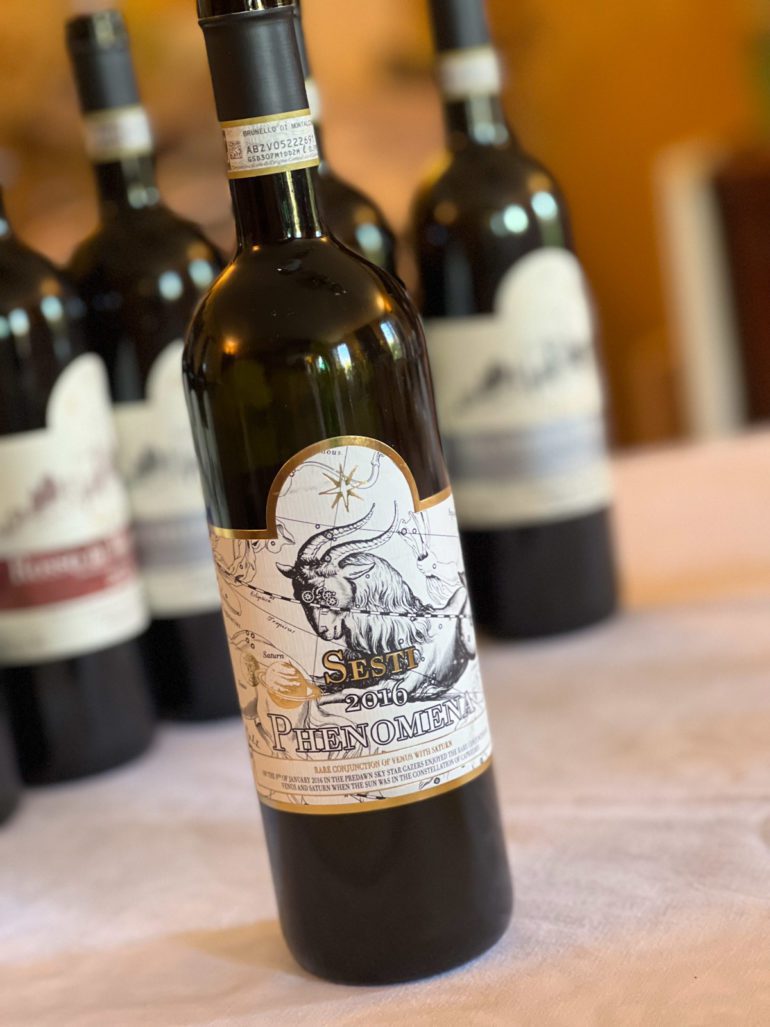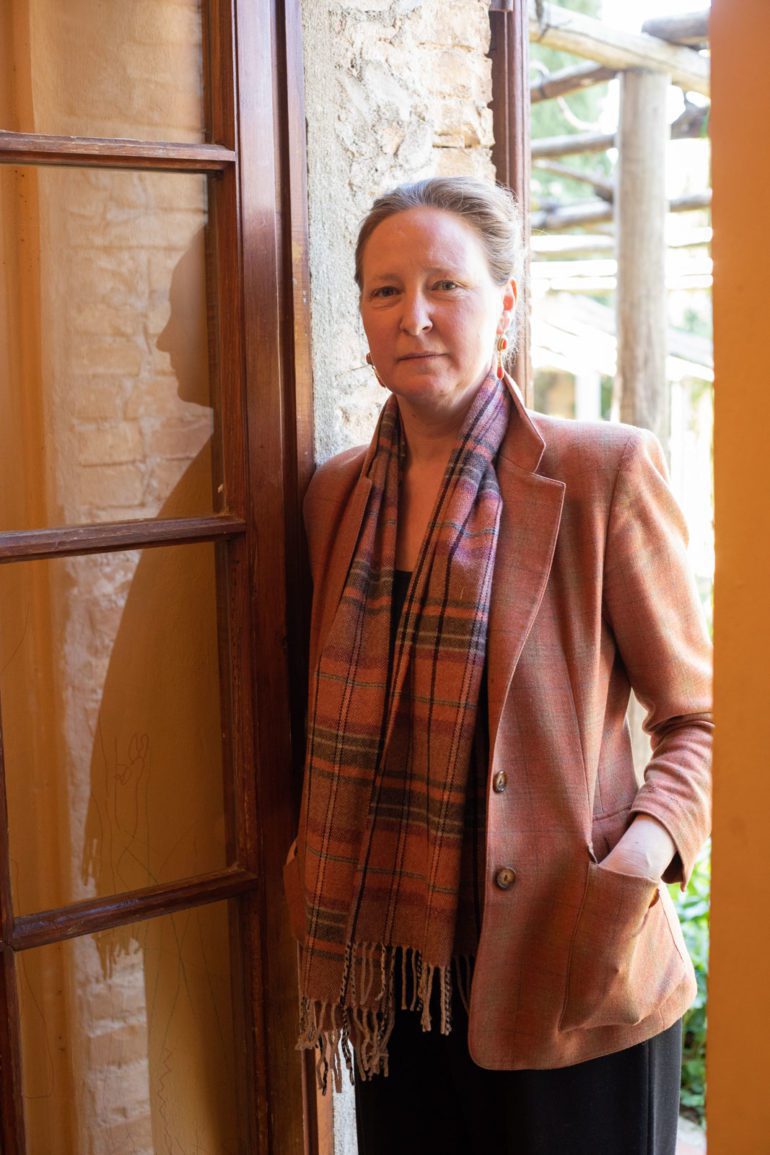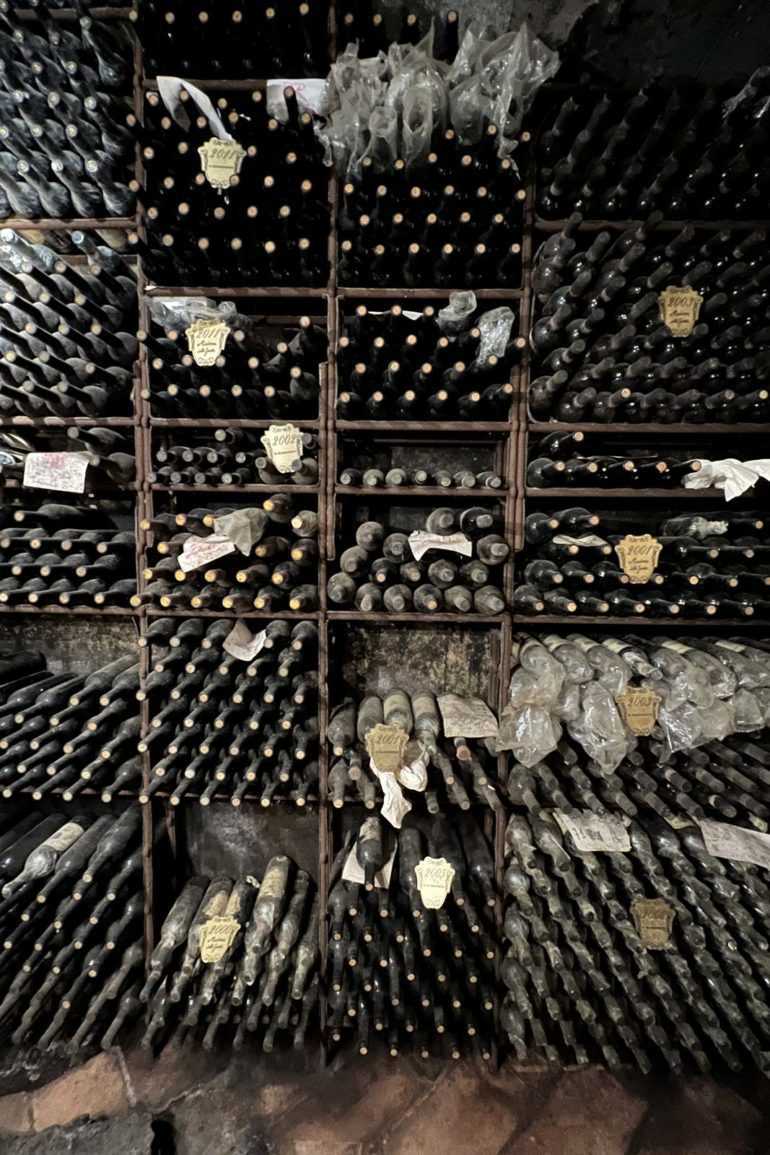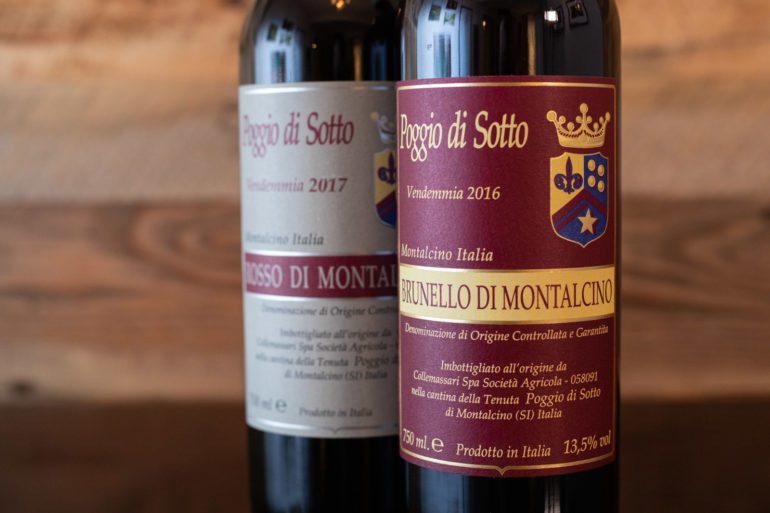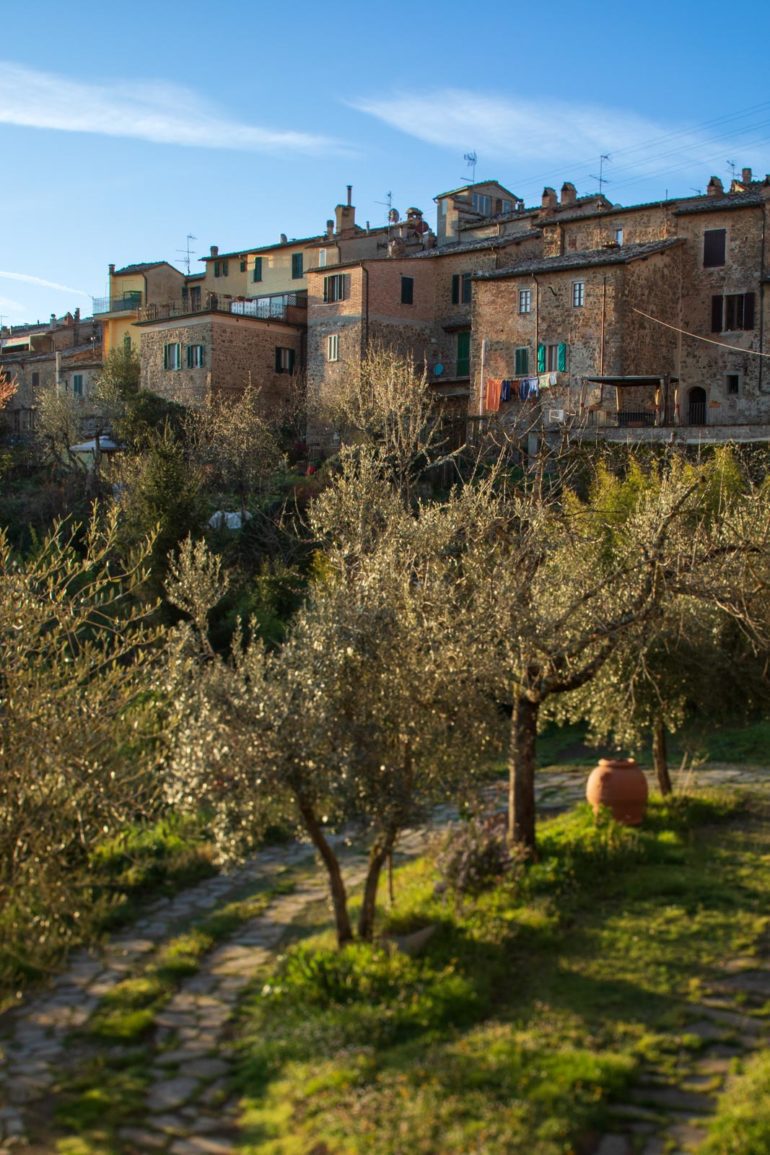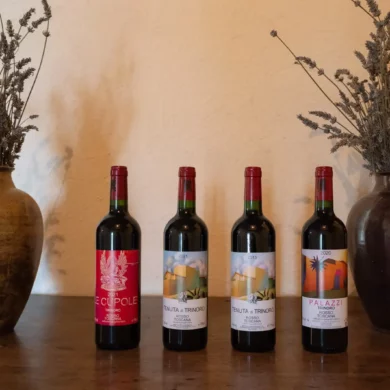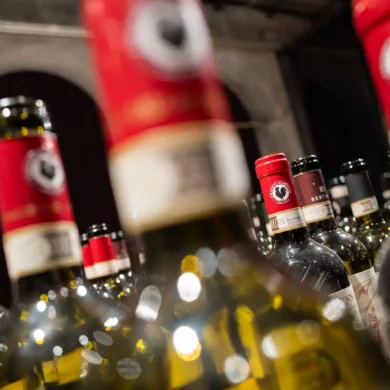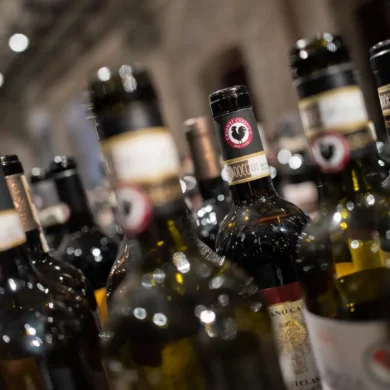If Brunello di Montalcino were an athlete, what kind of athlete would it be? I ask because I have encountered everything from a boxer to a prima ballerina this year. The common trait within this highly esteemed category of wine is that the wines have strong muscles — it is how they’ve trained those muscles that has led to such a wide-swinging set of results. Some wines have left me bruised, others have lifted me into the clouds. And along the spectrum between these two outcomes, I keep coming back to price: this thing that just happened, whatever that was … was it worth it?
It is an issue unique to this 2,635-acre DOCG appellation in southern Tuscany. Brunello — the localized and celebrated genetic clone of Sangiovese that defines this wine — is highly site-specific and, like any star athlete with a meal plan, it is as finicky and picky as they come. Regrettably, not every Brunello vine is growing in ideal conditions, and you can sometimes taste the mismatch. But furthermore, Brunello’s burly personality from the vineyard easily wilts at the winery, especially when it encounters a barrique barrel. It is a strange mix of muscles and sensitivity. Special handling and a deft touch are required.
But when Brunello’s regiment clicks into place, the results can be among the world’s most riveting wines. And so you look at a $250 bottle of Biondi-Santi and you think, “for a special occasion … damn, why not?” And if it takes $350 to acquire Il Marroneto’s “Madonna delle Grazie” riserva, just so you can have that experience once in your wine-drinking life … well, that’s what bucket lists are for, right?
What doesn’t fly are the over-extracted, oak-infected imitators that aspire for similarly extravagant prices. Their abundance drags the entire DOCG’s reputation down. There is always room for a second chance, but recent wines from Banfi, Val di Suga and especially Tenuta Silvio Nardi have left me so hollowed-out that I feel an obligation to name them here. All that to say, when it comes to Brunello, the G (garantita) in DOCG only guarantees so much.
What follows is a roundup of the top 14 Brunello di Montalcino wines that I’ve sampled over the past year, as well as upfront buying guidance, for these are not small purchases.
- The report does not include barrel or tank samples I tasted in Montalcino, which largely excludes Salicutti’s fine upcoming crop of Brunello di Montalcino wines, as well as what’s to come from Il Marroneto.
- I’ve used the high-value wine icon () extensively here, which indicates a wine over $100/bottle.
- Because multiple vintages were tasted in some cases, I am opting to move the vintage(s) to the end of each wine’s title.
- A photo essay of my time in Montalcino follows along the side … unless you are on mobile, then scroll to the bottom.
Brunello di Montalcino
A quick recap on what Brunello di Montalcino wines are, and how you should approach them:
- Brunello is one of Italy’s most prestigious wines, only rivaled by Barolo. That said, this is prestige we are talking about, a nebulous algorithm of age-worthiness, performance over time and pedigree. The flip-side of prestige is disappointment.
- These wines are made from 100% Brunello, a clone of Sangiovese unique to the Montalcino area.
- Aging requirements are the longest in Italy: four years with two in oak for Brunello di Montalcino, five years with two in oak and six months in bottle for Brunello di Montalcino Riserva. Many Riserva wines are single-vineyard in nature, but not all.
- Brunello di Montalcino can age for exceptionally long periods of time: multiple decades in many cases. However, that also means these wines are powerful, highly structured and unrelenting in their youth. If drinking a young Brunello (within 8-10 years of vintage), I would recommend some level of decanting to introduce oxygen and open the wine up.
TOP PICK: Il Marroneto “Madonna della Grazie” Brunello di Montalcino (2017)
★★★★★
From Il Marroneto’s Essential Winemakers of Italy page, I wrote this:
One of Italy’s greatest wines, and worth tasting at least once in your life. Here, the Brunello clone of Sangiovese finds its perfect form even while young, conveying a precision and elegance that ardent wine lovers might only taste a few times in their life. Rather than explore its tasting notes as fruits and flowers, or savory and earthy elements, it is best to simply enjoy the falsetto, tenor and baritone voices as they align in perfect harmony.
Not said in this write-up is a descriptor of the Madonna della Grazie vineyard, from which this beautiful wine hails from. It is a north-facing vineyard and quite small, crowned by a 13th century chapel that lends its name to the vineyard and wine. I’ve included a picture of it at right if you are on desktop (bottom if mobile). It is the first photo in the series. There seems to be magic in the air at this place. Read more on my profile of the Mori family.
Only about 5,000 bottles of the 2017 vintage were made.
Biondi-Santi Brunello di Montalcino (2016)
★★★★★
For the first time in this publication’s history, I will be writing a First-Taste Guide on a specific winery. Without Biondi-Santi, there might not be a Brunello di Montalcino, and given how wine fanatics clamor for a taste of these wines … well, such an article makes sense.
This visit in April was my first taste, and while I might not have the long-game perspective of other wine professionals on this estate, I got a very clear idea of what they represent — such was the transparency of identity within these wines.
In tasting the 2016 Biondi-Santi Brunello di Montalcino, we were granted a unique opportunity. Not only did we taste the vintage right out of the bottle, we also tasted one that had been open and re-corked for 48 hours. The same style, grace and agility introduced by the Rosso is vitally present here, but the edges seem more leathery and savory — a nice complement that lends depth without losing that brilliant floral note found in the Rosso. On the palate, the harmony of elements could not be improved upon: caressing acidity, supple tannins, a graceful weight. On the finish, it feels like a tuning fork whose vibrations are settling down, finally revealing its crisp shape.
Hype? Justified.
Price (around $250)? You decide.
Biondi-Santi Brunello di Montalcino Riserva (2015)
★★★★★
Following the Brunello di Montalcino at Biondi-Santi, we concluded with a taste of the 2015 Riserva, a wine made from the estate’s oldest vines and aged for an extra year. It is so coveted by collectors and connoisseurs that it sells for around $700. It is not the most expensive wine in Italy, but it carries perhaps the most storied legacy.
The Riserva manages to be a more profound wine than even the annata Brunello di Montalcino. There is deeper quality to the fruit and heightened savory characteristics. The floral tones seem to take on a more minty streak, but I had a hard time finding as much pleasure from the acidity and tannins as the annata, likely a product of youth. Regardless, within this wine’s expression you could easily see the estate’s identity — one of agility, suppleness, elegance and balance. To see that trajectory in all three wines was deeply impressive. There is a reason Biondi-Santi is so lauded.
BEST VALUE: Mulinari L’Aietta Brunello di Montalcino (2017)
★★★★★
For the full story on the remarkable vineyard from which this wine hails, please read my profile L’Aietta: Brunello Born from Love and Toil.
Francesco Mulinari’s 2017 Brunello di Montalcino might seem mild-mannered compared to its Brunello peers. There appears to be good reason for this, as the vineyard is not only high elevation, but all of the vines are trained low to the ground alberello style. From its steeply-pitched terraces, Mulinari has coaxed a wine into form that is beautifully juicy, bright and ethereal. It also has remarkable complexity, offering a lovely range of berry, cherry, floral, citric and savory flavors that ease their way into existence, rather than kick the door down.
Priced in the $70-$80 range, and considering the labor that goes into it, I find it to be the best value in the lot.
BEST VALUE: Pietroso Brunello di Montalcino (2017)
★★★★★
What a beautiful, ethereal Brunello the 2017 from Pietroso is. Here, we see exactly why the vineyard site matters so much, as the estate’s Brunello vines are all above 1,300 feet in elevation, close to the village center. That altitude enables more interaction with cool air at night, an essential component to phenolic development in Sangiovese. Furthermore, the soil is very rocky at Pietroso (thus the name, a derivation of “stony place”), which seems to give any Sangiovese wine a little more delicacy. It was something I witnessed across Chianti Classico and in Montalcino as well. In fact, when I tasted this wine, I tasted it blind alongside a Chianti Classico, Barolo and Taurasi, as a means to see if I could tell them apart. At first, I thought the Pietroso was from Chianti Classico because of its lightness, but its depth, its “muscles,” and its sustained note on the finish placed it firmly in Brunello.
Note that, like L’Aietta, this wine is in the mid-$70 range and the vineyards are only one hill over, with similar exposure. So I’m giving both wines a “best value” marker. And when I return to Montalcino, Pietroso will be atop my list of estates to visit.
Sesti Brunello di Montalcino (2015, 2016 and 2017)
★★★★ 3/4 (all three vintages)
Listed as an Essential Winemakers of Italy, I am very high on the wines and future of Sesti. In that write-up, I noted that “if Brunello di Montalcino is going to stay relevant in its increasingly hot future, estates are going to need to look a lot more like Sesti.”
The reason for this is land management. Vineyards do not dominate the property, forest does, and in the scorching-hot corner of the zone where Sesti resides (Sant’Angelo Scalo) that’s the difference between bruising alcohol levels and anything resembling freshness. Winemaker Elisa Sesti took us through a flight of the 2015, 2016 and 2017 Brunello di Montalcino, which was highly educational. Once again, to borrow from the Essential Winemakers profile:
Boldness is not the opposite of elegance … brooding, assertive wine(s) that manages to glide across the palate with ease and finish like a receding wave.
To provide that in such a warm zone is a minor miracle, and a testament to Elisa’s skill and experience.
Sesti “Phenomena” Brunello di Montalcino Riserva (2016)
★★★★ 3/4
The estate’s riserva is called “Phenomena,” and its label documents a major celestial event from the vintage. We finished the tasting with the 2016, a wine that still needs ample time in the bottle to show its best. There was Sesti’s noteworthy mineral finish, and deeper sense of richness to the fruit and textures, but I found the tannins to be too walloping at this stage. There’s beauty here; just wait.
Poggio di Sotto Brunello di Montalcino (2016)
★★★★ 3/4
In the 1990s, Poggio di Sotto came to the fore in Montalcino by utilizing soil analysis and a mix of Sangiovese clones to achieve precise results. As modern as that sounded at the time, the winemaking veered toward the traditional, as Giulio Gambelli advised founder Piero Palmucci to take a minimal-intervention approach in the cellar. (And that sure seems to be the way to go with all-things-Sangiovese).
Since then, Poggio di Sotto has been acquired by ColleMassari Wine Estates, an “is what it is” development that has added to some of the corporate flavor of Montalcino’s wine scene. But none of that matters in the glass if the wine is good, and the 2016 Brunello di Montalcino I sampled several months ago was very, very good. While the details seemed pressed together in a dense and layered presentation, the wine wasn’t exactly tight either. Just powerful, potent yet polished. This Brunello is audaciously savory and conveys a lovely minty sensation on the finish after several hours of being open. A very promising wine to cellar, but quite expensive at around $250/bottle. That’s roughly the equivalent to a bottle of Sesti and L’Aietta combined, which is the route I’d prefer.
Padelletti Brunello di Montalcino (2015, 2017)
★★★★ 3/4 (both vintages)
One of Montalcino’s great legacies lies with the Padelletti estate. With both literal and figurative roots in the area stretching back to 1570, their heritage is rare for Montalcino — an appellation with plenty of outsiders and opportunists.
I tried several wines at Padelletti, and found them to be the furthest away from maturity of all the estates I tasted. That in itself is not a bad thing, but the winery’s version of Brunello di Montalcino — among the most traditional in terms of vinification — requires years to loosen up. The 2017 Brunello di Montalcino brought forth some of the purest tones of cherry fruit, but a buffed-sandpaper tannin seemed to envelop a locked Pandora’s Box of potential within. The 2015 Brunello di Montalcino was highly informative of what I missed in the 2017: more of a leathery sensation, and a clearer sense of sapidity to the fruit — all of which I found in the 2017 once I revisited it (the lid to the box, easing open).
These wines are a prime candidate for the cellar, if you have time to spare. Otherwise, seek out Padelletti’s back vintages if you can.
Tenuta Buon Tempo Brunello di Montalcino (2017)
★★★★ 3/4
This lesser-known Castelnuovo dell’Abate estate can count two of Montalcino’s most famous wineries as neighbors: Poggo di Sotto is over the ridge, and next door lies Stella di Campalto. The vineyards are lower than many of the other wines featured in this report, but neither of these Brunello wines felt overbearing or cooked as a result, showing once again that Brunello defies hard-and-fast rules. In fact, there was a grace and persistence to both that snuck them on to this list.
While a “vast majority” of the 2017 Brunello di Montalcino spends its 3 years in oak cask, there is some usage of French-oak barrels here, but as a second passage. The tannins are restrained, serving their purpose without getting in the way, while a smoky-savory streak heightens the aromas.
Tenuta Buon Tempo “Oliveto P. 56” Brunello di Montalcino Riserva (2016)
★★★★ 3/4
The 2016 “P.56” Brunello di Montalcino comes from the upper portion of the oldest vineyard on the property, and seems to convey more depth and nuance. The wine is remarkably ready for drinking, and may be the most forthcoming Brunello Riserva I’ve ever tasted.
All photos: ©Kevin Day/Opening a Bottle. Top to bottom, left to right: The view over the Madonna delle Grazie from its namesake church; Federico Radi, winemaker at Biondi-Santi; Biondi-Santi’s three wines; 2017 Pietroso Brunello di Montalcino; The Fortress of Montalcino; 2016 Sesti “Phenomena” Brunello di Montalcino Riserva; winemaker Elisa Sesti of Sesti; the library of wines at Il Marroneto; two wines from Poggio di Sotto; the village of Montalcino at daybreak.
Note: A special thank you to the following estates who opened their winery and generously poured their wines for me in Montalcino: Biondi-Santi, Il Marroneto, Padelletti, L’Aietta and Sesti. This wine also features a handful of samples provided by importers and PR agencies. Learn more about our editorial policy.

